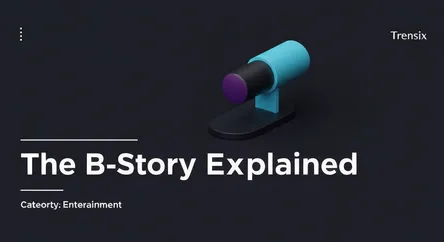Entertainment
The B-Story Explained

Discover the B-story, the essential secondary plot in TV and film. Learn how subplots enrich narratives, develop characters, and keep audiences hooked.
What is it?
A B-story, or subplot, is a secondary plotline in a narrative that runs parallel to the main A-story. It typically involves supporting characters and explores different themes or conflicts. While the A-story drives the central narrative, the B-story provides depth and complexity, often intersecting with the main plot to create new challenges or reveal crucial information that impacts the protagonist.
Why is it trending?
The B-story is a classic screenwriting tool, but its sophisticated use is a hallmark of modern prestige television. With serialized, long-form storytelling, writers use intricate subplots to build richer worlds and explore character motivations more deeply. Shows acclaimed for their writing are often praised for how their B-stories add thematic layers and narrative tension, making the viewing experience more engaging for audiences seeking complex entertainment.
How does it affect people?
For audiences, a strong B-story significantly enhances their connection to a show or film. It provides pacing breaks from the main plot's intensity and allows viewers to invest in a wider range of characters. These subplots often explore relatable, human-scale conflicts—like a character's career struggle or romantic dilemma—making the fictional world feel more realistic and lived-in. By adding emotional resonance, B-stories can make a good story unforgettable.